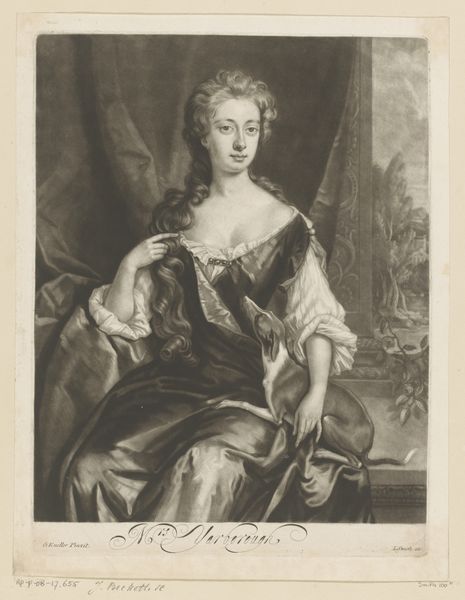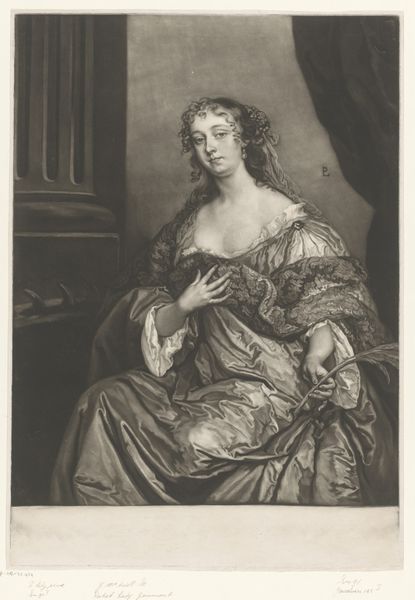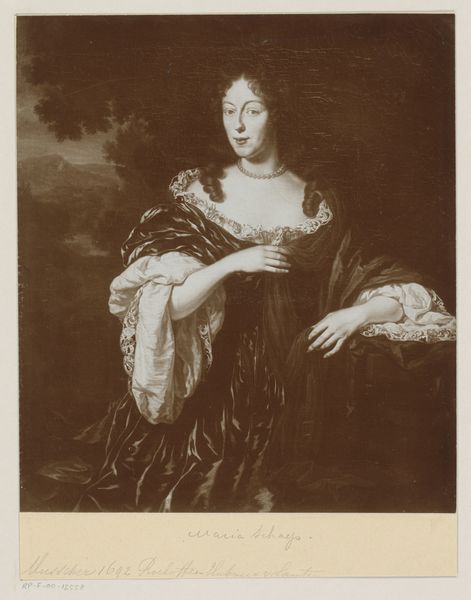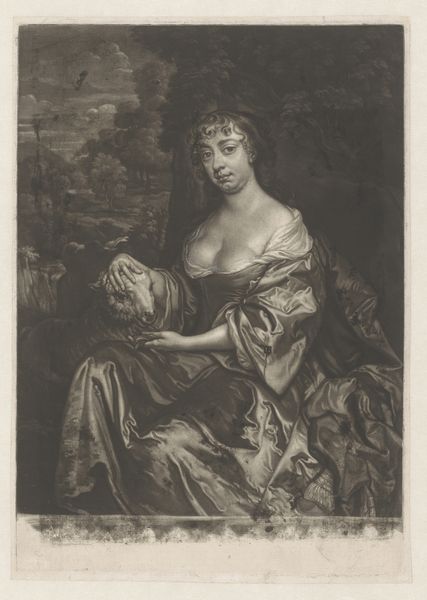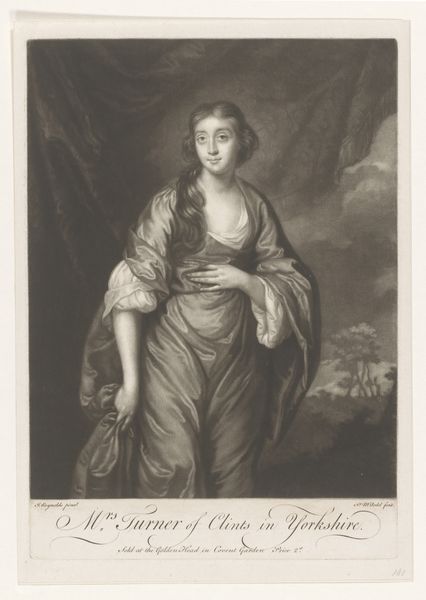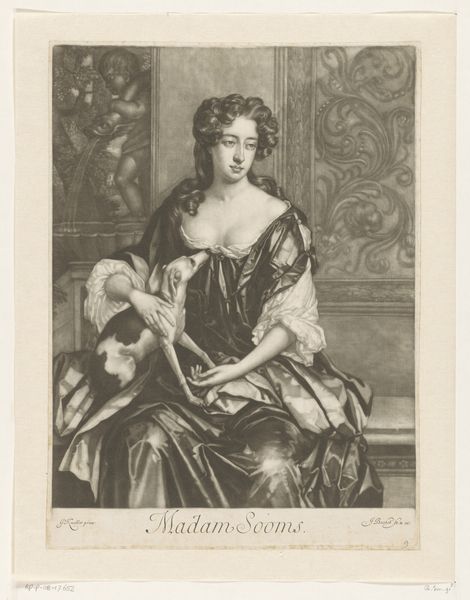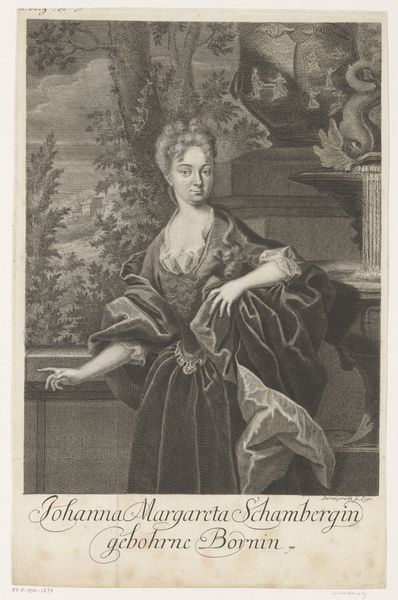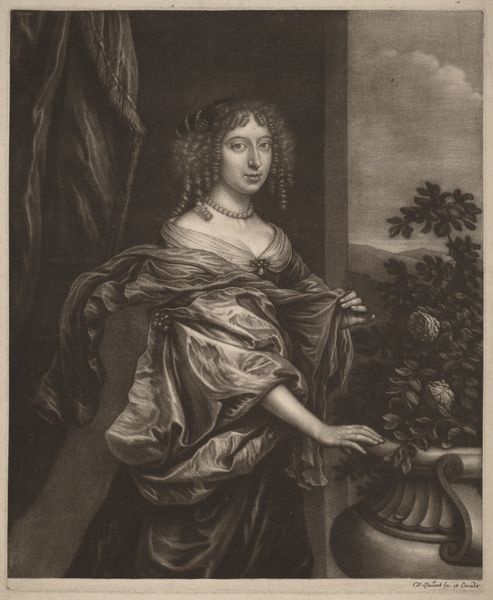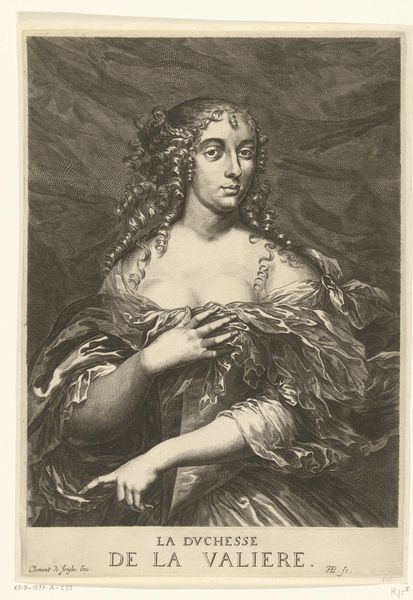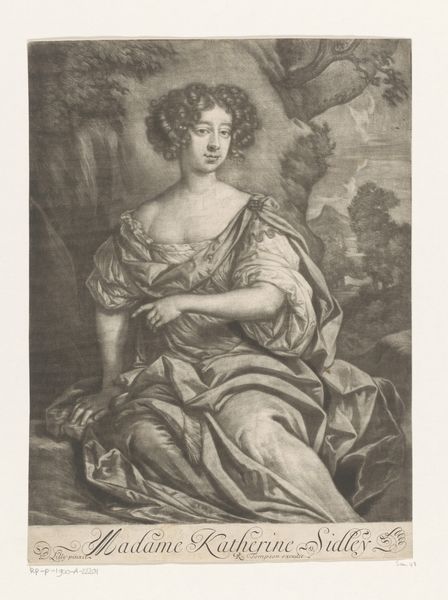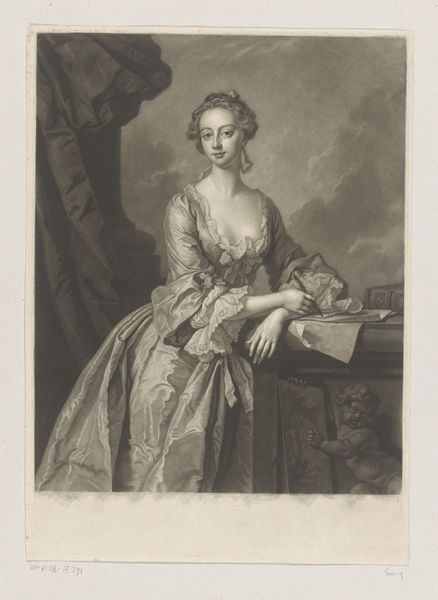
engraving
#
portrait
#
baroque
#
figuration
#
history-painting
#
engraving
Dimensions: height 506 mm, width 353 mm
Copyright: Rijks Museum: Open Domain
Curator: Before us hangs James McArdell’s engraving, "Portret van Jane Myddelton," dating from approximately 1745 to 1765. It's part of the Rijksmuseum's collection. Editor: The composition and tonal range immediately strike me; it's dark but incredibly soft, focusing on the opulent material of the sitter's gown and the texture of the fruit she holds. You can almost feel the weight of the fabric. Curator: Indeed. McArdell, a prominent figure in the history of mezzotint engraving, capitalized on the growing demand for accessible portraiture among the burgeoning middle class. It gave them access to elite imagery and solidified social aspirations. Editor: Right, and it is important to recognize that engraving itself—the labor, the tools, the skills required—made the reproduction and broader circulation of images possible, like those that could only be accessed by elites. Think of the economic forces at play in the world of printing and engraving at that time. Curator: Exactly! McArdell was shrewd in producing works that offered both visual appeal and social cachet to a broad market. His technical prowess allowed him to emulate the look of painted portraits. The ability of the image to convey status was everything. Editor: What gets my attention is the materiality he manages to reproduce—look at how the silk of her dress seems to pool and gather light. Engraving seems an almost contrary choice for translating the visual haptics of fabric and fruit. It speaks volumes to McArdell’s skills, but also how highly prized those very tactile experiences must have been. Curator: That attention to texture absolutely catered to the desires of the rising bourgeoisie. It offered them a glimpse, and then a means of association, with the trappings of the aristocracy. This image would have resonated within the socio-political contexts of that time. Editor: In a way, that points to a real blurring between "original" and "reproduction"—was the value of this work in its mimicry of the fine arts, or as its own medium speaking to materiality and methods? Curator: An insightful question. I think this work speaks to the complicated role of art in shaping social identity. It's not just about the individual sitter, Jane Myddelton, but the aspiration this image instilled. Editor: Agreed. It offers such a multi-layered insight into the economy of art-making and aspiration.
Comments
No comments
Be the first to comment and join the conversation on the ultimate creative platform.
